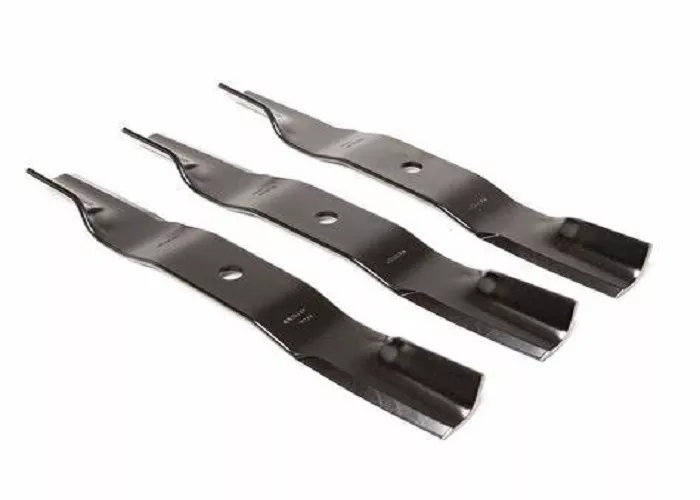Mower blades are a critical component of any lawn care equipment, directly affecting cutting performance, grass health, and overall lawn appearance. Among the different types of mower blades available, high-lift blades are specifically designed for superior grass discharge and improved mulching capabilities.
Understanding High-Lift Mower Blades
Definition and Design
High-lift mower blades are engineered with tall, curved fins (wings) on the back edge, which create a powerful upward suction as the blade rotates. This design enhances airflow, lifting grass clippings higher and ejecting them more efficiently through the mower’s discharge chute.
How High-Lift Blades Work
When the mower deck spins at high speed, the blade’s curved fins generate a strong vacuum effect, pulling grass upright before cutting it. The clippings are then propelled upward and expelled forcefully out of the discharge chute.
Primary Uses of High-Lift Mower Blades
High-lift blades are ideal for specific mowing conditions. Below are their most common applications:
Efficient Grass Discharge
- Best for dense, tall, or wet grass where clippings tend to clump.
- Prevents clogging in the mower deck by forcing clippings out quickly.
- Recommended for side-discharge mowing (rather than mulching).
Better Cutting in Tough Conditions
- Effective for thick, overgrown lawns where standard blades struggle.
- The increased lift helps stand grass upright for a more even cut.
High-Lift Blades vs. Other Mower Blade Types
| Blade Type | Best For | Airflow & Discharge | Mulching Ability |
|---|---|---|---|
| Standard Blades | General mowing | Moderate airflow | Poor mulching |
| High-Lift Blades | Tall/wet grass, bagging | Strong upward suction | Moderate (if designed for it) |
| Mulching Blades | Fine clipping decomposition | Low airflow (recirculates clippings) | Excellent |
| Low-Lift Blades | Sandy/dusty conditions | Minimal airflow (reduces dust) | Poor |
Advantages of High-Lift Mower Blades
Superior Grass Handling
- Reduces clogging in damp or overgrown lawns.
- Ensures cleaner discharge compared to standard blades.
Healthier Lawn Appearance
- The strong lift stands grass upright before cutting, leading to a more even trim.
- Prevents ragged cuts, which can stress grass and invite disease.
Time and Labor Savings
- Fewer stops to clear clogs or empty bags.
- Ideal for large properties and commercial mowing.
Limitations of High-Lift Blades
Not the Best for Mulching
Unless specifically designed for mulching, they do not recirculate clippings as efficiently as dedicated mulching blades.
Higher Power Requirement
- The increased air resistance means more engine strain, which may reduce fuel efficiency.
- Not recommended for underpowered mowers.
Dust and Debris Concerns
The strong airflow can kick up more dust and small debris, which may be problematic in dry conditions.
Maintenance Tips for High-Lift Blades
Regular Sharpening
- Dull blades tear grass instead of cutting, reducing lift efficiency.
- Sharpen every 20-25 hours of use for optimal performance.
Proper Balancing
- Unbalanced blades cause vibration, increasing wear on the mower.
- Use a blade balancer after sharpening.
Seasonal Inspection
- Check for cracks, bends, or excessive wear.
- Replace if damaged to prevent mower deck damage.
Conclusion
High-lift mower blades are an excellent choice for professionals and homeowners dealing with thick grass, frequent bagging, or wet mowing conditions. Their strong airflow and aggressive cutting action make them far more efficient than standard blades in challenging environments.
However, they are not a universal solution—mulching enthusiasts or those with low-powered mowers may prefer other blade types. By understanding their strengths and limitations, you can select the best blade for your specific lawn care needs.

